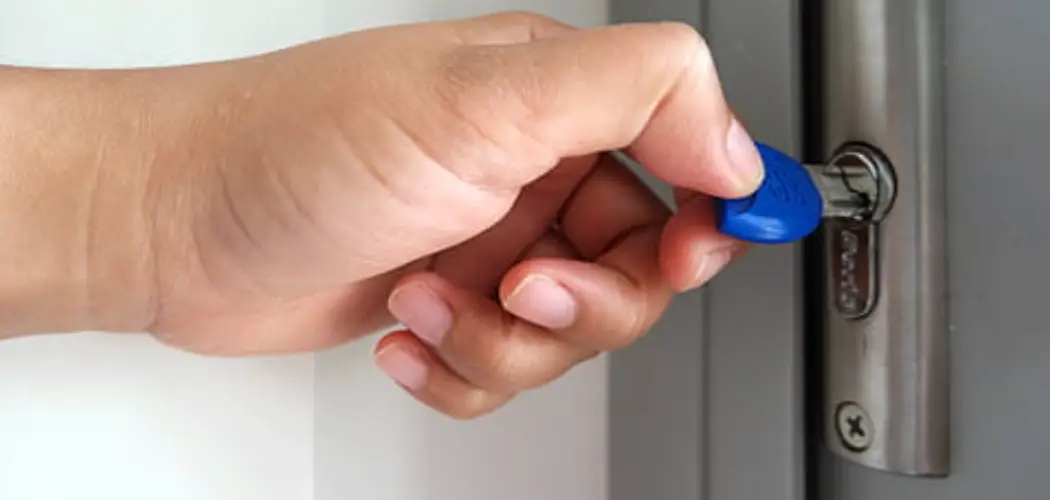Have you ever come home and been surprised to find that your front door is unlocked – when you know for a fact that you locked it before leaving? It can be a terrifying experience, as it means someone has either picked or tampered with your lock. Unfortunately, the threat of lock-picking affects everyone, from retail businesses and homeowners to even government organizations.
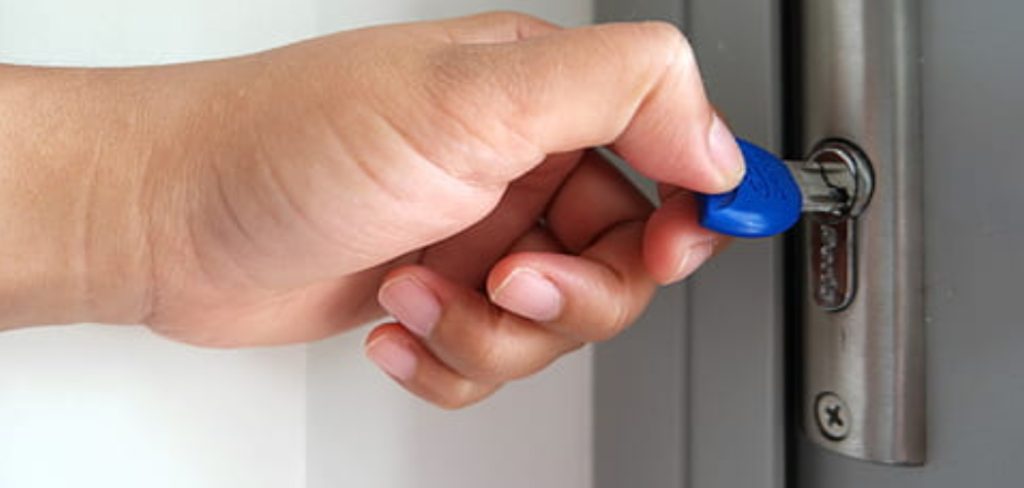
However, there are measures you can take to protect yourself against this type of intrusion. In this blog post, we’ll discuss how to stop someone from picking your lock so that you can feel safe and secure in your own home or business!
The Benefits of Lockpicking Prevention
There are a lot of benefits to taking measures to prevent someone from picking your locks. Let’s explore the following:
Home Security
Lockpicking prevention comes with a host of benefits that extend beyond simple protection from unwanted entry. A primary advantage is undoubtedly the enhancement of. By thwarting lock-picking attempts, you significantly decrease the chances of break-ins, theft, and property damage.
Increased Peace of Mind
Another benefit lies in the increased peace of mind it offers. Knowing that your locks are resistant to picking can provide a significant boost to your sense of security, allowing you to relax more, whether you are inside your home or away.
Deterrent Effect on Potential Intruders
The prevention of lockpicking also has a deterrent effect on potential intruders. When they see the added security measures, they are less likely to attempt a break-in, opting instead for easier targets. This is particularly true when preventive measures are visible, such as security cameras.
Increase the Value of Your Property
Lastly, such preventive measures can increase the value of your property. Homes with robust security systems are often seen as more desirable in the real estate market. It’s an investment that not only protects but also pays off in the long term. Overall, taking steps to prevent lockpicking is a worthwhile endeavor, providing tangible rewards.
Understanding the Basics of Lock Picking
Lock picking is a skill that, while seemingly complex, can be broken down into a few key components. Understanding these elements can help you better protect your property against this form of intrusion.
Explanation of Common Tools Used for Lock Picking
There are several tools utilized by individuals looking to pick a lock. Familiarising yourself with these tools can give you an idea of how locks are compromised.
- Lock Picks: These are the primary tools used for lock picking. They come in a variety of shapes and sizes, each designed for a specific kind of lock or technique.
- Tension Wrenches: Tension wrenches are the unsung heroes of the lock-picking world. They are used to apply rotational tension to the lock, which is crucial in setting the pins and opening the lock.
- Bump Keys: A bump key is a special type of key that can be used to open pin tumbler locks. It works by aligning the pins inside the lock to the shear line, allowing the lock to open.
Overview of the Principles Behind Lock Picking
Lock picking is based on a few fundamental principles. Understanding these can help you understand how to secure your locks better.
- Pin Tumbler Mechanism: This is the most common locking mechanism used in residential locks. It consists of a series of pins that prevent the lock from opening unless the correct key is inserted.
- Shear Line: The shear line is the physical gap in the lock’s cylinder that, when aligned correctly by the key (or, in the case of lock picking, by the lock pick), allows the lock to open.
Emphasis on the Simplicity and Accessibility of Lock Picking
It’s important to note that, despite the technical-sounding nature of the above terms, lock picking is not a skill that requires advanced knowledge or equipment. With a basic understanding of the principles outlined above and access to simple tools, almost anyone is capable of picking a lock. This is why it’s so important to take measures to prevent lock picking and protect your property.
Needed Materials
Given below are the materials needed in order to stop someone from picking your lock:
High Quality Lock:
The most important piece of the puzzle in terms of preventing someone from picking your lock is to use a high-quality lock.
Locking Hardware:
When selecting the locks for your property, you should be sure to select hardware designed with tamper-resistant features. These designs can often include a combination of hardened steel pins, anti-pick pins, and security pins.
11 Step-by-step Guidelines on How to Stop Someone From Picking Your Lock
Step 1: Choose High-security Locks
When selecting the locks for your property, be sure to select hardware designed with tamper-resistant features. These designs can often include a combination of hardened steel pins, anti-pick pins, and security pins. High-security locks are available in both padlocks and deadbolt locks for your doors.
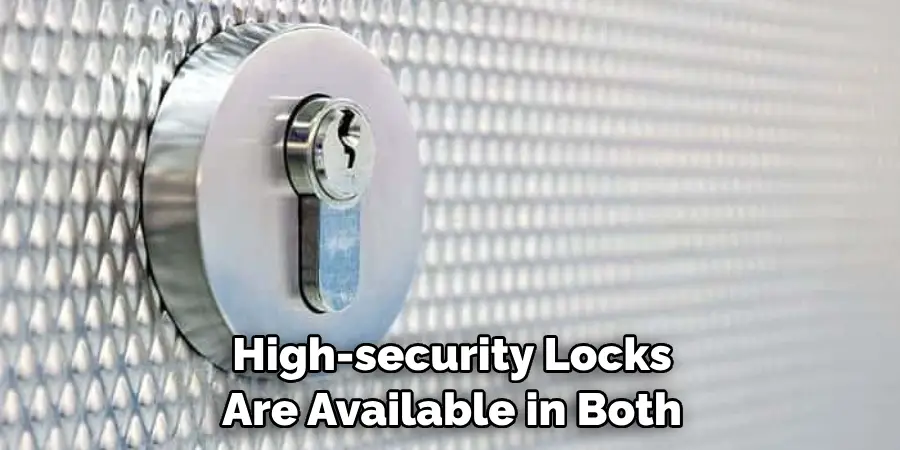
Step 2: Install Tamper Resistant Hinges
Tamper-resistant hinges are designed to integrate with the frame of the door, making it very difficult to gain access without drilling or cutting through them. It is important to note that these are not completely pick-proof, but they do provide an extra layer of security. This is an especially important precaution if you have doors with glass panels, as they are often vulnerable to break-ins.
Step 3: Know Your Lockpicking Technology
Understanding lockpicking technology can help you determine which materials will best suit your needs in terms of preventing someone from picking your lock. There are various tools that can be used to pick a lock, such as tension wrenches, lock picks, and bump keys. But by understanding the technology behind these tools, you can make sure that your locks are as secure as possible against unwanted entry.
Step 4: Use Additional Locking Devices
Installing additional locking devices such as door chains, jimmy-proof deadbolts, and padlocks can provide additional protection against someone picking your lock. It is also important to keep your locks regularly maintained and lubricated, as this can help make them more resistant to picking. But be sure to take care when lubricating as some types of lock can become damaged if the wrong type is used.
Step 5: Replace Broken or Worn Locks
Broken or worn locks should be replaced immediately in order to prevent anyone from easily bypassing them. Make sure to select sturdy locks with anti-pick pins and other tamper-resistant features when replacing broken or worn locks. This will help ensure that the lock is as secure as possible.
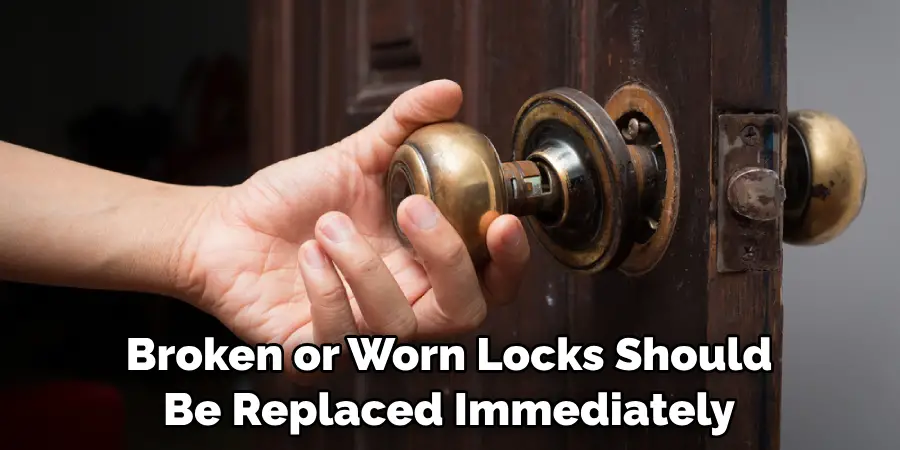
Step 6: Install Pin Tumbler Locks
Pin tumbler locks are designed to have multiple combinations within the same keyway, making it difficult for someone to pick the lock. Installing pin tumbler locks on your doors and windows is a great way to prevent someone from picking your lock. This type of lock is available in both residential and commercial applications.
Step 7: Cover Up Your Locks
Installing covers over your locks can help to make them more difficult to access and pick. This is especially important for outdoor locks as they are more exposed and easier to access than indoor locks. It is important to select a cover that is specifically designed for the locks you have installed. It is also important to regularly check the cover for signs of tampering or damage.
Step 8: Use Combination Locks
Combination locks are a great way to secure your property, as there is no physical key that can be used to open the lock. Instead, it would be best if you input a specific combination of numbers in order to gain entry into the locked area or container. This type of lock can provide an additional level of security against someone picking your lock.
Step 9: Install Lock Boxes
Lock boxes are designed specifically for storing items safely and securely. They are made tamper-resistant, making it difficult for someone to pick the lock. It is important to choose a lock box with an adequate level of security for the items you are storing away. This will help to ensure that your items are kept safe from any unwanted access.
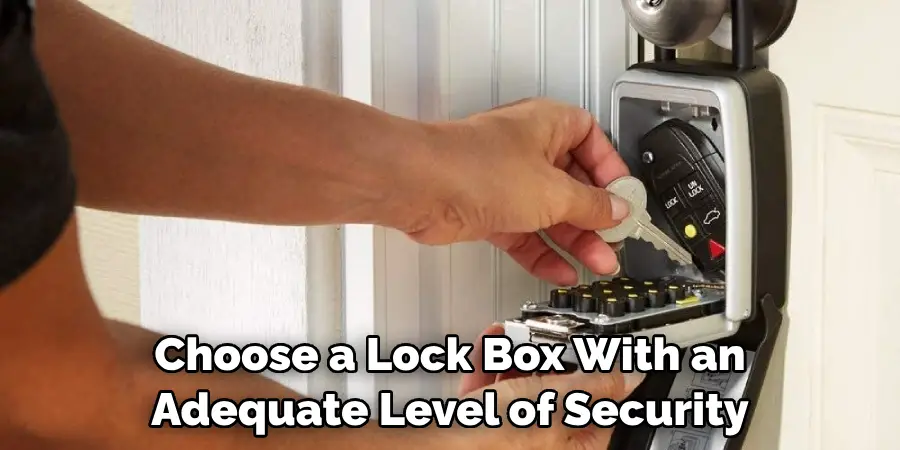
Step 10: Make Use of Security Cameras
Installing security cameras in and around your property is an excellent way to deter criminals from attempting to pick your locks. The presence of cameras can act as a deterrent and provide you with evidence if someone does attempt to tamper with your locks. It is important to make sure that the cameras are positioned in such a way that they can capture any activity happening around the locks on your property.
Step 11: Keep Up With Maintenance
It’s important to keep up with regular maintenance on all of the locks installed on your property. Check for any signs of wear or damage and replace them immediately if needed. This will prevent anyone from easily picking the lock and gaining access to your premises. This also applies to all of your security systems, such as cameras and alarms.
By following these steps, you can rest assured, knowing that no one will be able to pick their way into your property without permission. Good luck!
How Much Could It Cost?
The cost of preventing someone from picking your lock will vary depending on the type and quality of the locks you choose, as well as any additional security technology and personnel that you may wish to install.
High-quality locks can range from a few hundred dollars to several thousand, depending on the complexity of the system and the difficulty of installation. Installing cameras, additional door locks, and other security measures will also add to the overall cost. However, making an investment in security will be worth it in the long run when you consider the peace of mind it can provide.
Some Common Mistakes People Often Make When Installing Lockpicking Prevention Measures
Mistake 1: Overlooking Key Areas
Many people make the mistake of overlooking key areas where locks are installed. For example, many properties have windows and other entry points that are not as well-protected as their front doors. Taking measures to secure these areas is essential to making sure your home or business is safe from potential intruders.
Mistake 2: Failing to Test Security Systems Regularly
Another common mistake is failing to test security systems regularly. Testing systems requires more than just ensuring they are in working order; it also includes periodically checking to make sure there have been no attempts to exploit weak points or break into the property. This should be done on a regular basis as part of your overall home security routine.
Mistake 3: Improperly Installing Devices
Finally, many people make the mistake of improperly installing devices. It is important to make sure that locks are properly fitted and installed, as an ill-fitting lock can become a security vulnerability. It is also important to ensure that security cameras have been positioned in such a way that they will be able to catch any activity around them. Taking these steps can help to ensure that your property is kept secure from any potential intruders.
Mistake 4: Not Knowing the Latest Lockpicking Techniques
Finally, it is important to stay knowledgeable about the latest lock-picking techniques. As technology advances, so do the tools and methods of criminals looking for ways to pick locks. Keeping up with the latest advancements in lock-picking technology can help you stay one step ahead of potential intruders.
Mistake 5: Not Considering Professional Security Services
Finally, it is important to consider the possibility of investing in professional security services. A reliable security company can provide you with expert advice and guidance when it comes to protecting your property from any potential intruders. This could be especially beneficial for businesses looking for a comprehensive security solution that is tailored to their specific needs.
These are just some of the common mistakes people often make when installing lockpicking prevention measures. By keeping these tips in mind, you can ensure that your property is properly secured and protected from any unwanted intruders.
Behavioral Practices to Deter Potential Intruders
In addition to the physical measures and technological solutions mentioned above, behavioral practices can also significantly contribute to the deterrence of potential intruders.
Discreet Key Management
It’s essential to manage your keys discreetly to prevent potential unauthorized access.
- Avoid Leaving Spare Keys in Obvious Places: Spare keys may provide convenience, but they also increase the risk of unauthorized access when left in apparent locations like under the doormat or in a flower pot. It’s safer to give a spare key to a trusted neighbor or family member instead.
- Consider Using Key Safes or Smart Lock Systems: Key safes or smart lock systems provide a more secure solution for spare key storage. Key safes can be coded with a combination known only to you, while smart locks can be opened via a code or an app on your smartphone, eliminating the need for physical keys entirely.
Regularly Changing Locks and Keys
Regularly changing your locks and keys can further enhance your property’s security.
- Schedule Routine Maintenance: Regularly check your locks for any signs of wear or misuse. It’s advised to schedule routine maintenance to ensure that your locks are in the best possible condition and replace them if necessary.
- Update Locks after Moving into a New Home: When moving into a new home, it’s crucial to change the locks as previous owners or tenants may still have keys. By updating the locks, you ensure that only authorized individuals have access to your property.
Home Security Tips Beyond Locks
In addition to implementing rigorous lock management and regular maintenance, there are several other measures you can take to enhance your home’s security further.
Adequate Lighting Around Entry Points
A well-lit exterior can deter potential intruders.
- Install Outdoor Lighting: Consider installing lighting around your home’s entry points. This can include porch lights, landscape lighting, and motion-sensor lights.
- Use Automatic Timers: To save energy and add an extra layer of security, consider using automatic timers to turn lights on and off at predetermined times.
Surveillance Camera Installation
Surveillance cameras can be an effective deterrent and a valuable tool for identifying intruders.
- Choose the Right Camera System: When choosing a camera system, consider factors like video quality, storage capacity, and whether it includes night vision capabilities.
- Strategically Place Your Cameras: Install your cameras in areas where they can clearly capture the faces of people approaching your home, such as by the front door or any first-floor windows.
Neighborhood Watch and Community Engagement
Community involvement can also play a significant role in preventing home invasions.
- Join or Start a Neighborhood Watch Program: A neighborhood watch program encourages community members to look out for each other and report any suspicious activity to law enforcement.
- Stay Connected with Your Neighbors: Regular communication with your neighbors can help keep your home safe when you’re away. Inform them of any extended absences so they can keep an eye on your property.
By implementing these additional measures, you can further strengthen your home’s security and enjoy greater peace of mind.
What to Do If You Suspect Your Lock Has Been Picked
Despite taking all the necessary precautions, there is still a possibility that your lock may be picked by an experienced intruder. If you suspect that this has occurred:
- Contact Your Local Authorities: Immediately contact your local law enforcement and report the incident.
- Document Any Evidence: If possible, document any evidence of forced entry or tampering with your lock for future reference.
- Consider Upgrading Your Locks: If your lock has been successfully picked, it may be time to consider upgrading to a more secure option. Consult with a professional locksmith for recommendations on the best locks for your specific needs.
By staying knowledgeable about potential vulnerabilities and taking necessary precautions, you can significantly reduce the risk of lock picking and ensure the safety of your property.
The Importance of Regular Maintenance for Locks
Regular maintenance of your locks is a critical aspect of home security. Properly maintaining your locks enhances their longevity and ensures optimal functionality over time. A well-maintained lock is less likely to malfunction or be easily compromised by potential intruders. Routine lock maintenance can entail activities such as lubrication, cleaning, and periodic check-ups for signs of wear and tear.
At the same time, it allows for early detection of any issues that could compromise your security, such as rusty parts, jammed mechanisms, or even worn-out keys. Therefore, incorporating lock maintenance into your home security routine not only saves costs in the long run but also significantly bolsters your property’s security, contributing to a safer living environment.
Smart Home Security Technology
With the rapid advancement of technology, the traditional methods of home security are being revolutionized by smart security systems. These smart technologies provide increased convenience and stronger security measures, bringing peace of mind to homeowners.
Keyless Entry Systems
One of the most popular innovations in smart home security technology is keyless entry systems. These systems do away with physical keys, enabling homeowners to lock and unlock their doors using a unique code, biometrics, or a smartphone application. This not only eliminates the risk of losing keys or having them fall into the wrong hands but also allows homeowners to grant temporary access to visitors without having to share physical keys. Furthermore, in case of any suspicious activities, some keyless entry systems can alert the homeowners, enhancing overall security.
Remote Monitoring Options
Remote monitoring systems, another significant breakthrough in home security technology, provide homeowners with the ability to monitor their homes from anywhere, anytime. With the help of security cameras and a network connection, homeowners can access real-time video feeds of their property on their devices. Additionally, smart sensors installed throughout the house can detect unusual activities such as unexpected door or window openings, and send alerts directly to the homeowner’s phone. This increased visibility and control over home security allow for immediate action in case of any potential threats.
In conclusion, smart home security technologies such as keyless entry systems and remote monitoring options provide advanced security measures. They not only enhance security but also offer convenience and peace of mind to homeowners, making them a worthy consideration for anyone looking to bolster their home security.
Emergency Preparedness Plan
In addition to having a robust home security system, it’s crucial for every household to develop a comprehensive emergency preparedness plan. This plan is a proactive measure to ensure the safety and well-being of your family during unexpected situations such as natural disasters, home invasions, or health emergencies.
Identification of Potential Emergencies
The first step in creating an emergency preparedness plan involves identifying potential emergencies relevant to your area. This may include earthquakes, floods, wildfires, or even man-made disasters. Understanding these risks can help you prioritize which safety measures to implement.
Emergency Communication Plan
Communication is critical in times of emergencies. Establish a clear communication plan that details how the family members should contact each other, where they should meet, and what actions they should take. This may also include a list of important contacts such as local authorities, medical facilities, and insurance companies.
Emergency Kit and Supplies
Every household should have an emergency kit containing essential items such as food, water, medications, first-aid supplies, and important documents. These kits should be easily accessible and should contain enough supplies to sustain all family members for at least three days.
Regular Emergency Drills
To ensure that all family members know what to do in an emergency, regular drills should be conducted. These drills provide practical experience that can help family members respond quickly and effectively during a real emergency.
Evacuation Plan
In the event of an emergency that necessitates evacuation, a detailed evacuation plan should be in place. This includes identifying safe exit routes from your home and designating a meeting place for family members.
By incorporating these key components into your emergency preparedness plan, you not only ensure your family’s safety during unforeseen situations but also contribute significantly to their peace of mind. It’s always better to be prepared and have a plan that you never use than to be caught off guard without one.
Frequently Asked Questions
Q: What is the Best Way to Prevent Someone From Picking Your Lock?
A: The best way to prevent someone from picking your lock is to use high-quality locks with tamper-resistant features, as well as additional locking devices such as door chains and padlocks. You can also install security cameras to deter potential criminals from attempting to pick your lock.
Q: How Much Does it Cost to Stop Someone From Picking Your Lock?
A: The cost of preventing someone from picking your lock will vary depending on the type and quality of the locks you choose, as well as any additional security technology and personnel that you may wish to install. High-quality locks can range from a few hundred dollars to several thousand, depending on the complexity of the system and the difficulty of installation.
Installing cameras, additional door locks, and other security measures will also add to the overall cost. However, making an investment in security will be worth it in the long run when you consider the peace of mind it can provide.
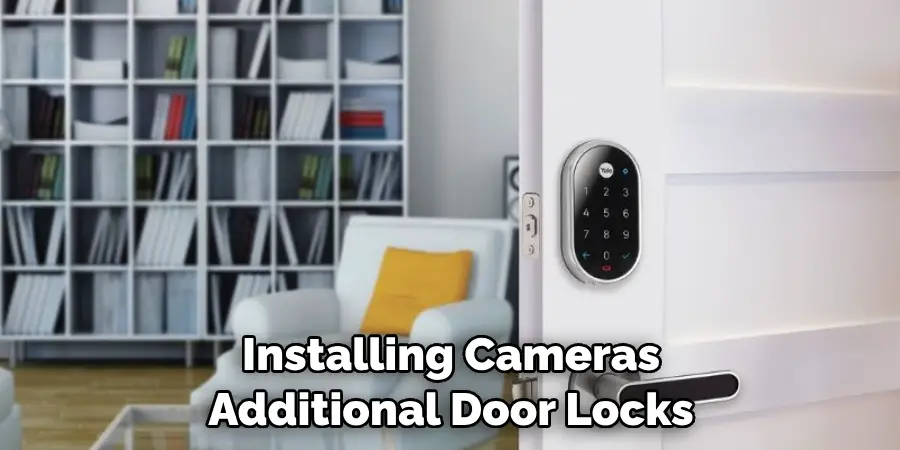
Q: What Should I Do if Someone Picks My Lock?
A: If you discover that someone has picked up your lock, contact your local authorities immediately. Be sure to report any suspicious activity or persons in the area as well. Additionally, take steps to change or replace the locks and upgrade your security system to prevent future incidents.
Q: How Often Should I Check My Locks?
A: It’s recommended to check your locks at least once a year for any signs of wear or damage. Additionally, if you move into a new property or experience suspicious activity near your home, it is wise to have the locks changed as soon as possible. Be sure to use high-quality locks with tamper-resistant features to best protect yourself.
Conclusion
In conclusion, the steps to prevent someone from picking your lock are relatively simple, but could potentially save you and your possessions a considerable amount of distress. Practice proper lock maintenance by regularly lubricating and inspecting locks to avoid common security risks.
Choose strong and secure padlocks with hardened components whenever possible, such as those made from stainless steel. Additionally, you can make your locks even more secure by installing high-security cylinders that feature advanced security components. Finally, invest in a digitalized home security system or key-fob access keypad in order to deter would-be intruders.
With all these tips on how to stop someone from picking your lock to properly protect yourself against lock picking, it is much easier to protect yourself and the contents of your home from these potential threats. Taking these precautions ensures that you won’t be caught off guard if someone attempts to pick your lock and protects you from future possible intrusion attempts. Invest in security now so that you don’t have to worry later!

